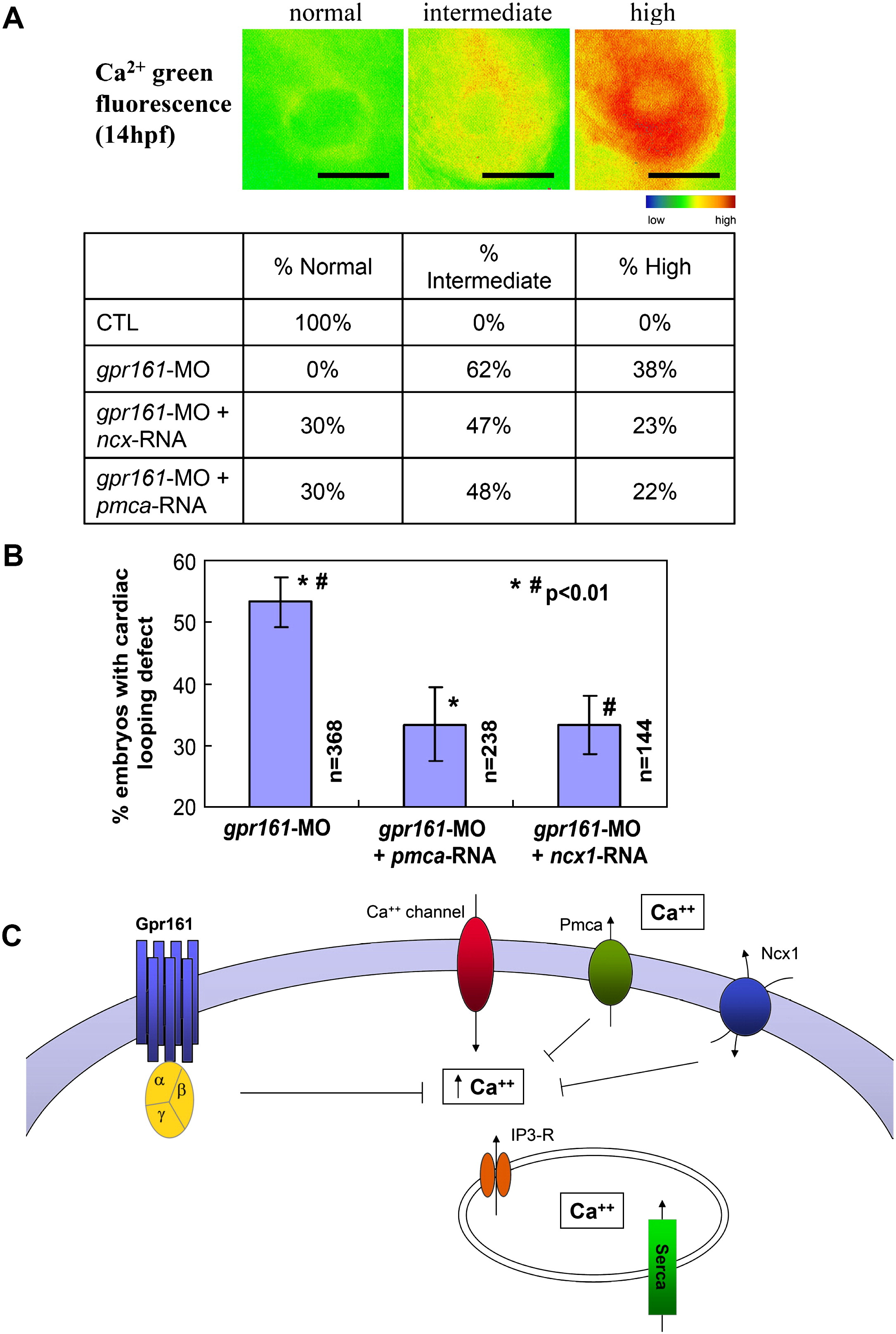Fig. 6 gpr161 knockdown disrupts Ca2+ handling which is essential for establishment of L?R asymmetry. (A) Defective Ca2+ handling resulting in elevated intracellular Ca2+ in gpr161 knockdown embryos surrounding the Kupffer′s vesicle. Pseudocolour scale for the intracellular Ca2+ signal as normal, intermediate and high intensity. The percentage of embryos exhibited such level of Ca2+ signal was listed in control, gpr161 knockdown, ncx1- and pmca-RNA rescue of the gpr161 knockdown embryos. (B) Removal of excessive Ca2+ by over-expression of 1 pg of Ca2+ pump pmca or Na+/Ca2+ exchanger ncx1 can rescue gpr161 knockdown phenotype. Cardiac looping defect in gpr161-MO (MO#24, 54.1 ± 4.0%; n = 368), rescued by pmca-RNA (32.0 ± 6.0%; n = 238), rescued by ncx1-RNA (34.0 ± 4.8%; n = 144) and results were from 4 injection experiments. n was number of total embryos. Error bars were ± SEM. t-test * and # indicated statistical significance, p < 0.01. All scale bars were 100 μm. (C) A model of gpr161 involved in Ca2+ handling and essential for L?R asymmetry for cardiac morphogenesis and visceral asymmetry in developing zebrafish embryos. Blocking gpr161 function led to defect in Ca2+ handling and resulted in elevated free cytosolic Ca2+ and loss of cardiac looping and abnormal chamber morphogenesis. The gpr161 knockdown can be rescued by removing excessive cytosolic free Ca2+ using over-expression of Ca2+ pump pmca and Na+/Ca2+ exchanger ncx1.
Reprinted from Developmental Biology, 323(1), Leung, T., Humbert, J.E., Stauffer, A.M., Giger, K.E., Chen, H., Tsai, H.J., Wang, C., Mirshahi, T., and Robishaw, J.D., The orphan G protein-coupled receptor 161 is required for left-right patterning, 31-40, Copyright (2008) with permission from Elsevier. Full text @ Dev. Biol.

